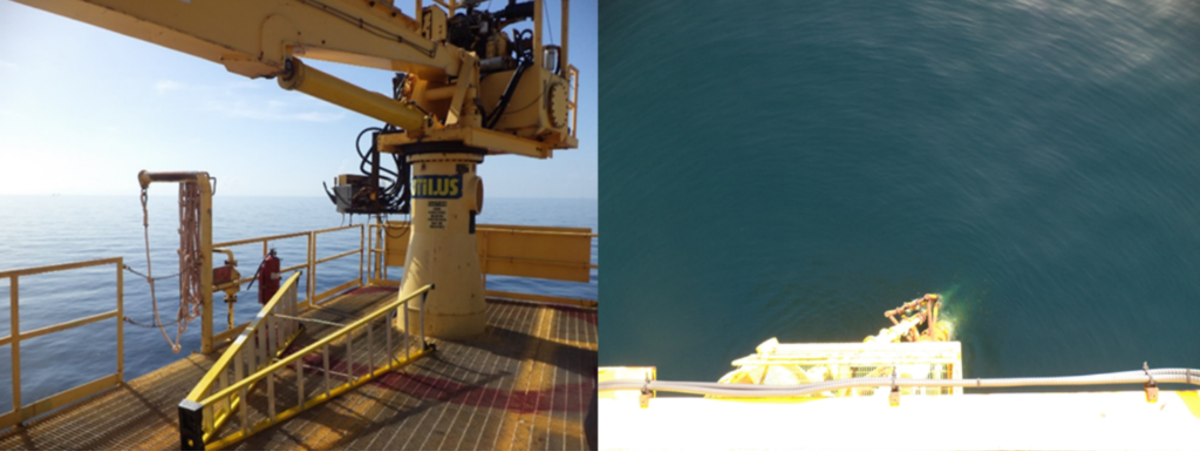BSEE: Worker injured in fall from height into water
- Safety Flash
- Published on 13 February 2019
- Generated on 11 December 2025
- IMCA SF 02/19
- 2 minute read
Jump to:
The Bureau of Safety and Environmental Enforcement (BSEE) has published Safety Alert 343 in which a worker fell 24 m into the water.
What happened?
The worker was replacing a control valve on the platform crane. A 3m ladder was placed between the overboard handrail and the crane. As the mechanic was positioned on the crane skid (located around 2 m above deck) he realised that he would need to descend the ladder to retrieve tools for the job. After repositioning himself on the ladder, his grip or footing was lost, causing him to fall backwards and land in the water approximately 24 m below.
He was transported back to the platform by a fishing vessel, 45 minutes after the incident, where he was then flown ashore for treatment; he was later diagnosed with fractures of cervical and lumbar vertebrae.

location of crane mechanic at time of incident (left) and view over the handrail (right)
What went wrong? What were the causes?
- High winds prevented the worker from retrieving a life vest which was thrown to him, but was later able to retrieve a vest which had been placed into a life ring.
- Strong currents caused him to drift further from the platform.
- The worker did not follow the safe work practices which required him to use fall protection for heights exceeding 6 ft above the deck.
- The United States Coast Guard (USCG) regulation (33 CFR 146.20) requiring the use of work vests when working near or over water was also not followed.
- The job safety analysis (JSA) did not identify falling as a potential hazard during this operation.
Recommendations
The BSEE recommended that operators:
- Ensure that proper procedures are implemented establishing minimum requirements for working at height.
- Make sure personnel working at heights have knowledge and experience required to perform the job safely.
- Review all pre-job planning procedures to ensure all necessary response procedures are included:
- consider equipment position and hazards when completing pre-job planning so as to minimise risk.
Members may wish to refer to
- IMCA Safety Video – Be prepared to work safely – Working at height
Related Safety Flashes
-
IMCA SF 02/10
8 April 2010
-
IMCA SF 10/03
2 August 2003
IMCA Safety Flashes summarise key safety matters and incidents, allowing lessons to be more easily learnt for the benefit of the entire offshore industry.
The effectiveness of the IMCA Safety Flash system depends on the industry sharing information and so avoiding repeat incidents. Incidents are classified according to IOGP's Life Saving Rules.
All information is anonymised or sanitised, as appropriate, and warnings for graphic content included where possible.
IMCA makes every effort to ensure both the accuracy and reliability of the information shared, but is not be liable for any guidance and/or recommendation and/or statement herein contained.
The information contained in this document does not fulfil or replace any individual's or Member's legal, regulatory or other duties or obligations in respect of their operations. Individuals and Members remain solely responsible for the safe, lawful and proper conduct of their operations.
Share your safety incidents with IMCA online. Sign-up to receive Safety Flashes straight to your email.